Onion sets "Sturon": is it possible to plant before winter and features of care
Onion Sturon was created according to Dutch breeding technologies based on the famous German variety Stuttgarter Riesen. Culture has won recognition all over the world for its valuable qualities. Variety differs in ease of care, persistent immunity and high productivity. When optimal conditions are created, vegetables will retain their presentation and taste for eight months, which allows them to be grown on an industrial scale.
The content of the article
Description of the variety
The Dutch variety Sturon is easy to care for and has a long shelf life. Recommended for breeding as a biennial or annual crop. Grown from nigella or sevka.
Reference! Nigella is the seeds of a common onion that can be used to grow full-fledged bulbs.
The culture is resistant to shooting. The height of the feathers is 40-45 cm, the color is gray-green. The flower arrows, left to obtain nigella, stretch up to 1.5 m. When opened, the inflorescence forms a white ball. The seed capsule contains up to six seeds.

Origin and development
This is a relatively young culture, but already widely known in many countries. The variety was entered into the State Register of Breeding Achievements of Russia in 2009.
It can be grown both for personal farming and on an industrial scale.
Chemical composition, vitamins, trace elements and beneficial properties
The chemical composition of onions is extremely rich for a relatively small vegetable.
Macronutrients in 100 g:
- calcium (30 mg);
- magnesium (15 mg);
- potassium (170 mg);
- phosphorus (56 mg).
Microelements in 100 g:
- iron (0.8 mg);
- zinc (0.8 mg);
- fluorine (30 μg);
- boron (200 mcg);
- iodine (3 μg);
- manganese (0.23 mg);
- chromium (2 mcg).
Protein content per 100 g - 1.5 g; fat - 0.2 g; carbohydrates - 8.2 g. The presence of vitamins such as vitamin C, a full group of vitamins B, E and PP makes onion a biologically valuable product. It also contains phytoncides and polysaccharides.
Reference! Phytoncides are volatile substances that inhibit the growth of pathogens. To restore the defenses of the human body, it is enough to inhale onion vapors for 30 minutes.
Ripening period
The ripening period is average, the growing season lasts 110-120 days.
Yield
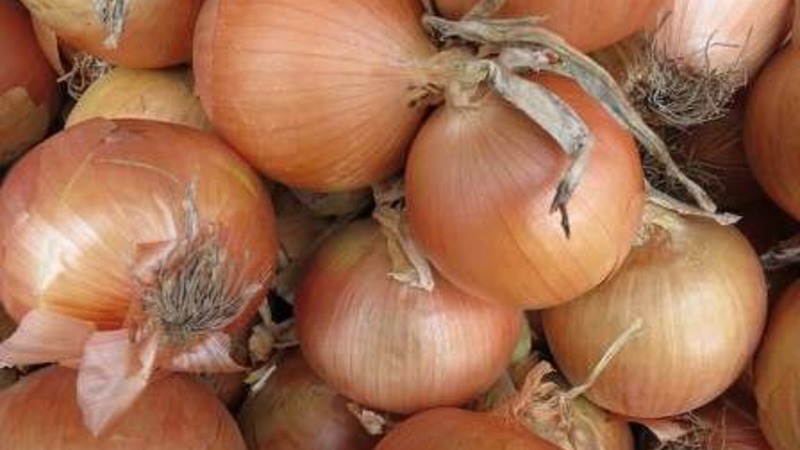
Productivity depends on soil composition and growing conditions. Average indicators vary in the range of 250-350 c / g or 2.5-3.4 per 1 sq. m. At the time of harvest, the share of ripe vegetables reaches 70-75%. After ripening, the ripeness is 100%.
Disease resistance
The culture is endowed with increased immunity to fungal and viral diseases. But with improper care, it is possible to be damaged by rot and downy mildew. Excess moisture leads to diseases. Also, the crop is vulnerable to frequent feeding.
Reference! The application of fertilizers in large doses makes the forming bulbs larger, but reduces the immunity of the plants.Also, an excess of fertilizer lowers the shelf life and nutritional value.
Bulb characteristics, taste and appearance
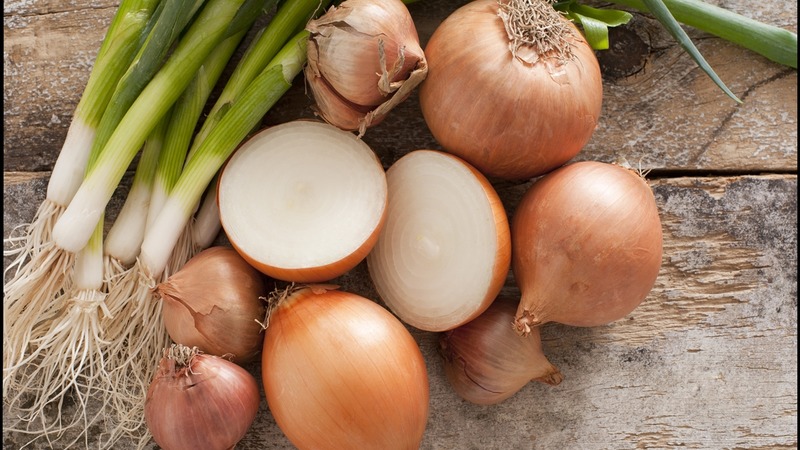
The bulbs are large, the average weight is from 180 to 220 g. The shape is slightly elongated, the neck of the bulb is thin. Onion scales are dense, yellow-brown in color.
The variety is distinguished by its spicy and pronounced taste. It is perfect for preparing fresh salads, first and second courses, especially for frying.
It is interesting! The sugar content in the onion reaches 6% - this is more in the pear. It is for this reason that onions taste sweet after frying.
The photo shows the Sturon onion variety.
Suitable regions and climate
Despite the average ripening time, the culture has taken root in many regions. The most favorable in terms of climate and soil composition are Central and West Siberian.
The plant is cold-resistant, withstands minor frosts. The soil suits him loose and fertile, light loam is considered ideal.
Advantages and disadvantages
Many gardeners note a number of advantages in culture, especially an unusual taste that perfectly complements any dish.
The pluses also include:
- unpretentious care;
- disease resistance;
- high productivity;
- landing in cold regions;
- marketable condition;
- long storage.
The disadvantages include a decrease in yield with improper care. The soil composition also affects the yield: dense or poorly drained soil will reduce the productivity of the crop.
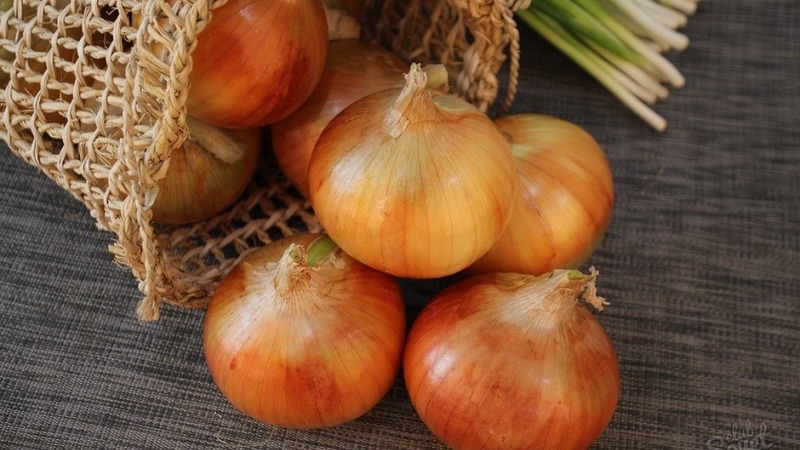
What is the difference from other varieties
Long preservation distinguishes Sturon from other varieties. At a humidity of 70% and a room temperature of 2-3 ℃, the bulbs retain their taste and presentation for 7-8 months. The ability of onions to grow in almost any region of Russia is also appreciated.
Features of planting and growing
Most often, the variety is grown by a two-year method. To do this, first sow seeds of Sturon onion to obtain a set, and in the second year, plant a set to obtain marketable bulbs.
When is it better to plant on greens
You can plant Sturon onions on greens throughout the year. In winter, a greenhouse is suitable for this, and in warm weather it is planted in open beds. When planting with sevkov, further care is minimized. It is much more difficult to grow onion feathers from seeds. Seeds take longer to germinate and require more attention.
Is it possible to plant before winter
Many are interested in the question of whether it is possible to plant Sturon onions before winter. Yes, you can, this is a common practice.
Planting before winter is performed in late September - early October, depending on the region. The main thing is that at least three weeks remain before the onset of frost. Winter onion sets Sturon for sowing choose the smallest, no more than 1 cm.
Ground requirements
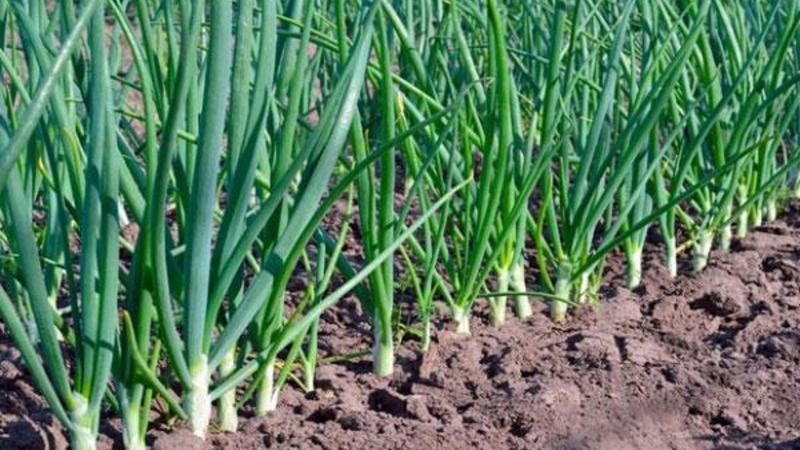
For the full development of the culture, a loose and nutritious soil is required. The soil is dug twice, the first time in the fall with the introduction of humus or chicken droppings. For greater saturation of the earth, wood ash is added. In addition, ash destroys many pathogens. In the spring digging, before planting, chicken droppings are also introduced into the beds. For ease, washed river sand is added to the soil.
The beds are organized in a sunny area with deep groundwater. Lack of sunlight will negatively affect the formation of bulbs.
Seed preparation and planting dates
Chernushka (seeds) is sown in late March - early April. Direct seeding is carried out only in the southern regions. In other cases, the culture is grown through a set.
Before sowing, the seed is germinated. A growth stimulator "Epin" is added to a glass of warm water and seeds are placed in the finished solution for a day. Then they are placed on a damp cloth and left in a warm place for three days.
Sow to a depth of 2 cm in well-heated soil... Leave 20-30 cm between the rows.With dense plantings, the seedlings are thinned so that the distance between the seedlings is at least 10 cm.
Onion sets Sturon are planted before winter and spring.Spring sowing begins no earlier than mid-April or early May. 3-4 days before planting, the seedlings are warmed up near the battery, so it will sprout faster. Immediately before sowing, the planting material is soaked for 30 minutes in a weak solution of potassium permanganate for disinfection.
Landing is carried out in clear weather. The depth of the planting holes is no more than 4 cm, the distance between them is 15-20 cm. A little wood water is placed on the bottom of the hole and filled with water. Do not water after planting.
Reference! The signal to start sowing for all regions is the flowering of bird cherry. Bird cherry will not bloom in case of recurrent frosts.
Growing features
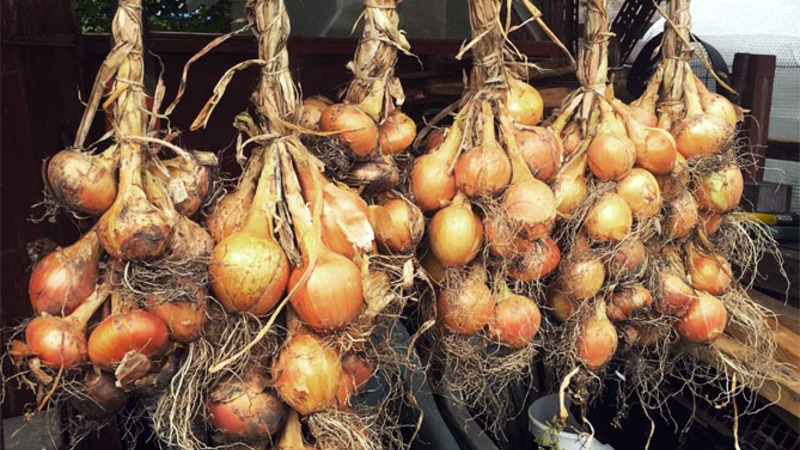
Taking care of your culture is not difficult. The main thing is to create optimal conditions for full development, namely: drainage and soil air permeability.
Watering mode
In the first half of the growing season, the crop requires regular and abundant watering. But it is not necessary to create stagnant moisture: this will lead to the formation of fungal diseases. In addition, forming bulbs can rot. Since July, they water it only when the top layer of the soil dries out strongly, but frequent loosening is carried out.
Loosening the soil and weeding
For the full development of the onion, oxygen is needed - for this, loosening is carried out. The earth is loosened to a depth of 3 cm, otherwise there is a risk of damaging the roots.
The beds are weeded so that the weeds do not take up nutrients and do not interfere with the growth of seedlings. Also on weeds, pathogenic spores that are dangerous to the plant persist.
Top dressing
The culture is fed twice for the entire period. The first top dressing consists of potash and calcium nitrate. In 1 bucket of water, dissolve one tablespoon of each drug. The second time the plant is fed, as soon as 5-6 leaves are formed, using phosphorus-potassium fertilizers. Fresh manure is not recommended.
Disease and pest control
Onion fly sucks sap from the leaves, causing the plant to wither. The larvae of this pest are no less dangerous. In the fight against flies, salt and tobacco dust are used. The saline solution is prepared simply: dissolve 200 g of salt in 10 liters and gently water each seedling. And the aisles are sprinkled with tobacco dust, its pungent smell repels the insect.
Peronosporosis (downy mildew) affects the plant at all stages of development. Fungal disease leads to a decrease in yield and short-term storage of the bulbs. Compliance crop rotation rules and the use of healthy seed reduces the risk of developing the disease.
For the prevention of planting, spray with a 1% solution of Bordeaux liquid. When the disease manifests itself, they stop watering and the seedlings are sprayed with a solution of copper sulfate.
Important. If you pick green feathers for food, keep in mind that pests and fungal spores penetrate into the resulting sections.
Harvesting and storage
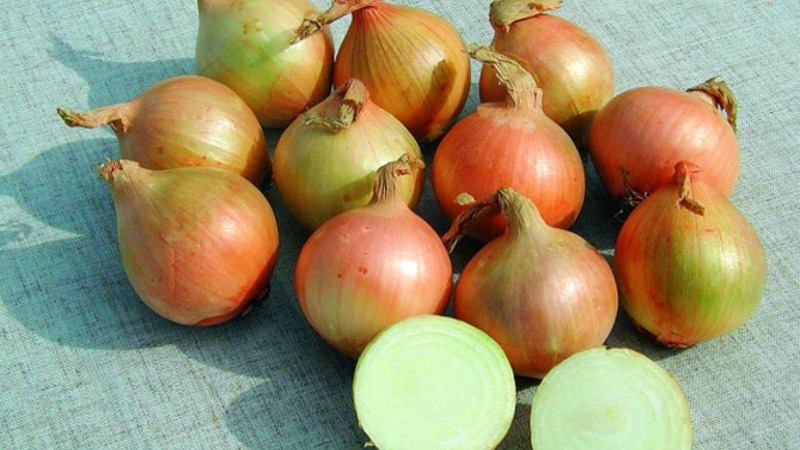
Harvested in the second half of July... Signal to collect yellowed feathers serve. Cleaning is carried out in the morning, in clear weather. The turnip dug out of the ground is left on the site until the evening.
Storage conditions
After drying, the onions are harvested in a dry, well-ventilated area. Unfold in no more than one layer or bundle for hanging. After the tops have dried, they are cut off or braided in braids. Long roots are pruned carefully without damaging the bulb. The optimum temperature for long-term storage is 2-4 ℃.
Difficulties in growing
When groundwater occurs close to the surface, onions are grown on raised ridges. Otherwise, there is a risk of rotting.
If fertilizers were not applied in the autumn digging, then in the spring the soil is saturated with all components, using a full range of minerals. The soil especially needs nitrogen, phosphorus and potassium.
The best precursors for onions are cucumbers, tomatoes, early cabbage and greens. After them, the land will retain its fertility and the necessary nutrients.
Tips from experienced gardeners
Gardeners willingly share tips and observations that will help keep plants healthy and increase yields.
- If you plant carrots or dill next to onions, you do not need to worry about the health of your seedlings. These plants will drive off each other's pests.
- There is no need to delay the harvest, as this leads to the sprouting of the onions. As a result, ripe vegetables do not store well.
Culture reviews
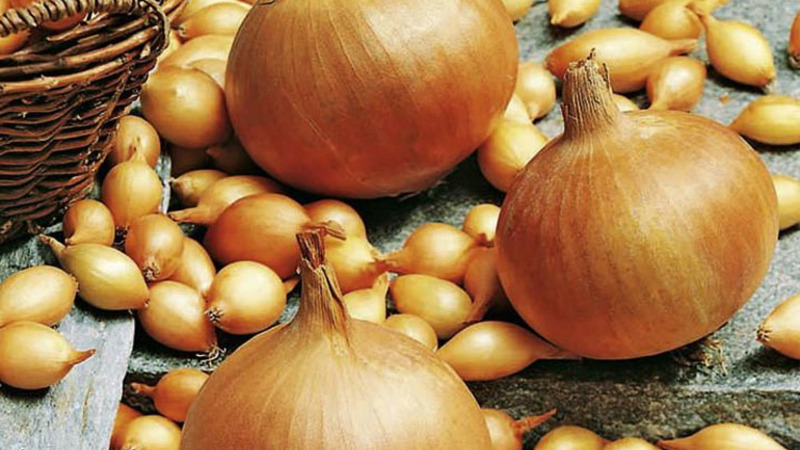
The reviews for Sturon are numerous and positive. Almost everyone who grows this crop is satisfied with the result:
Irina, Penza: «Last year I decided to plant a winter bow Sturon. I planted a small amount in a greenhouse. In general, I was satisfied. The plant is unpretentious, caring for it is very simple. Watered infrequently, but carried out prophylaxis against fungal diseases. The culture turned out to be with strong immunity, did not get sick. Now I will plant in the spring to get a marketable crop. "
Lyudmila, Bryansk: “I have been growing for more than one year. For planting, I use only purchased sets. The culture is high-yielding and unpretentious. Large and sweet onions, suitable for salads, first courses and side dishes, for winter preparations. The culture is resistant to diseases and pests, but for the purpose of prevention it was treated twice with "Fitosporin". I applied top dressing only once, but the harvest was still at its best: I gathered at least 2.5 kg per square meter. "
Conclusion
The many benefits of the Dutch Sturon onion have not gone unnoticed by gardeners. The culture is valued for its high yield up to 320 kg / ha, strong immunity to diseases and simple agricultural technology. The piquant taste of the vegetable complements the list of benefits and gives the dishes a light sweetness that is harmoniously combined with moderate spiciness.